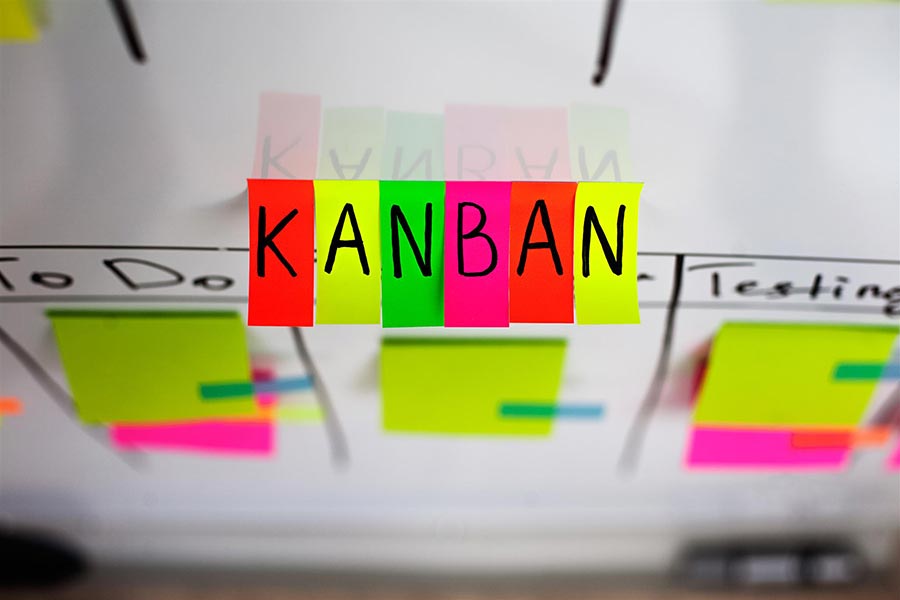Originally, Kanban was a streamlining system developed by the Japanese automobile giant Toyota in the 1940s. They used it to effectively reduce wastage of resources by matching production with the market demand, instead of producing first and selling later. The Kanban board consisted of various rows and columns that represented the project and its demands.
One can even consider it to be an advanced, industrial-grade to-do list, represented on a publicly viewable and accessible board. Employees had to change the cards on the Kanban board, in accordance with the progress that had been made in each division of the board, allowing others and, more importantly, managers to keep an eye on the progress, bottlenecks, and performance.
Immensely successful then and still successful now, the Kanban board is a productivity-boosting, lean manufacturing system that has now been digitalized and enhanced to meet the new standards and scale of modern business settings. Why and how a company can benefit from adopting Kanban software is what we are going to go through next.
Physical Boards are No Longer Feasible
Given the scale of production in the modern world, we can no longer consider physical Kanban boards to be feasible, as they would fill entire floors in no time! This is the primary reason why the Kanban model is now available as interconnected, industrial grade software systems.
If a company continues to use physical Kanban boards in 2019 and beyond, they are going against one of the core principles of Kanban, which is a reduction of wasted resources.
Eliminating the Shortcomings of the Physical Kanban Board
The advantages of adopting a Kanban system, in general, are plenty, but if you are reading this, you likely know about them already. Just in case you don’t though, Kanbanize explains everything about Kanban and how to use it with an online software in vivid detail, so do check out the link to understand the basics first.
Kanbanize offers one of the most advanced online Kanban software systems in the global market, so you will also find the right agile solution that’s fit for your own business.
After you have checked out the Kanban methodology in general and what it brings to a production facility from the Kanbanize website, consider the results a company would be able to achieve, if they were somehow able to eliminate the following from the Kanban system.
- The need to physically go to the board in the office and update it
- Inability to access the Kanban boards from outside the office
- The lack of real-time and universal board updates
- Insufficient history data and loss of worked out solutions
These are just some of the many other shortcomings which an electronic Kanban system eliminates, therefore, streamlining the agile process itself. In the long-term, the amount of time, effort, and money saved by switching over to digital Kanban boards would be nothing short of astounding.
Universal Access and Real-Time Updates
We briefly mentioned universal access and real-time updates previously, but a closer look at how it happens is required to make more sense of the statement.
- No time is wasted when anyone and everyone in the project can update the Kanban board in real time
- Employees instantly know when to take the next step, as soon as a step has been completed
- Managers know which are the bottlenecks and, therefore, where to divert their attention
- Simultaneous access to the board is allowed and conflicting steps are canceled automatically
- Room for setting WIP limits reduces the chance of simultaneous and conflicting updates to the system
- Remote employees outside the office or even country can access the Kanban board relevant to them
- Modern online Kanban software solutions offer users the opportunity to access the system even from their smartphones
- Any previously worked out solution can now be accessed easily and when required
Performance Tracking through Unlimited History Access
There is virtually no limit to the amount of history you can keep stored in the software system’s local or cloud servers, which means that it’s possible to analyze the data and find patterns, as well as problems in the production process.
More importantly, though, historical performance data enables continuous improvement. What this means is that when you adopt a software-based online Kanban tool, it automatically records and may even suggest the right solution for a bottleneck issue, if something similar has been solved already during one of the previous projects.
On top of all this, the security of important information from previous projects, such as the solutions we just mentioned, are stored in a more secure way than it would otherwise be on a physical Kanban card, which simply contains a few scribbled lines of info on it! The amount of data and information that an employee can add to each card and during each step is once again, virtually unlimited, making it so much more effective down the line.





